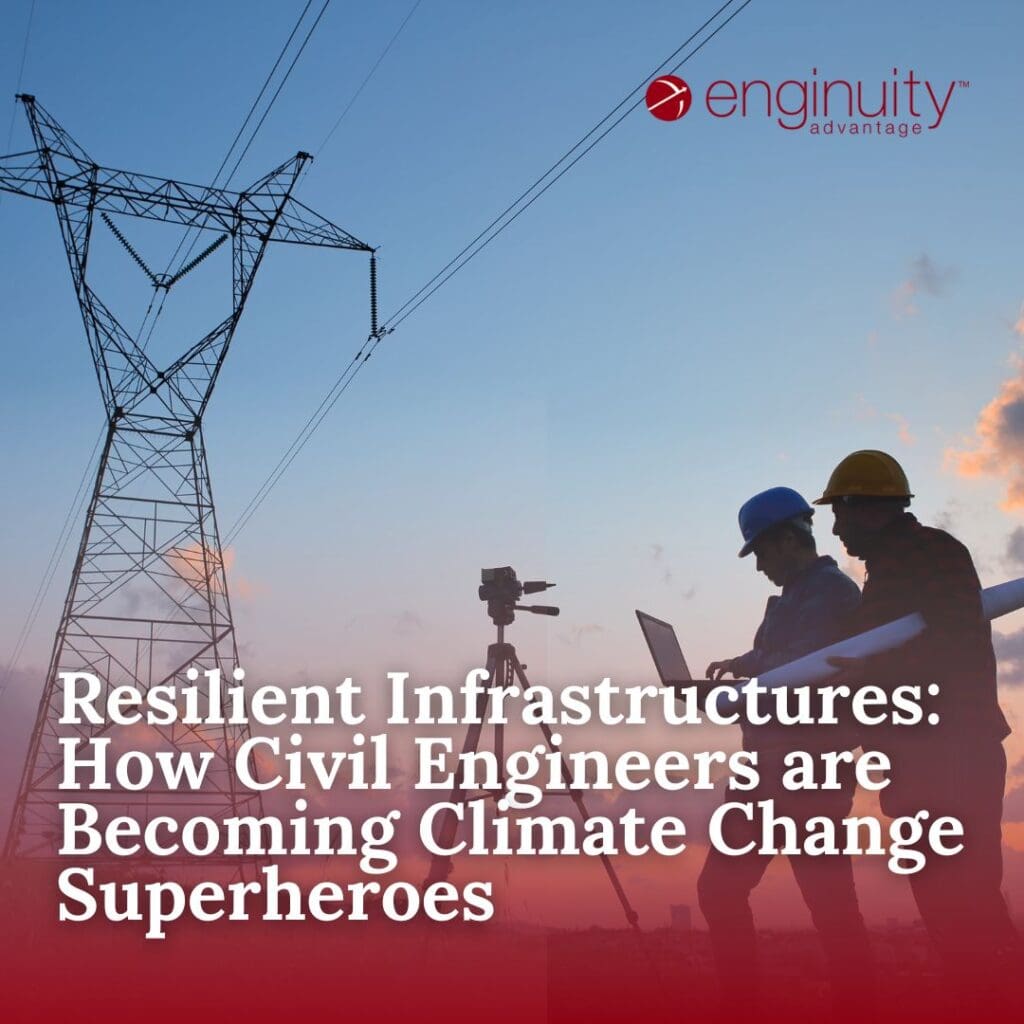Resilient Infrastructures: How Civil Engineers are Becoming Climate Change Superheroes

Harnessing the Power of Resilient Infrastructures: A Civil Engineer’s Journey
Introduction: The Climate Change Challenge
In the realm of civil and environmental engineering, one cannot ignore the profound challenges that climate change presents to our world. It’s a problem that affects us all, and it requires innovative solutions from those on the frontlines—civil engineers. Over the past half-century, the Earth’s average temperature has surged, with the most significant increases occurring in the last two decades. In this article, we will delve into the captivating world of resilient infrastructures and explore how civil engineers are rising to meet these challenges head-on.
The Climate Change Conundrum
Climate change is not merely about warmer summers or unpredictable rainfalls; it encompasses a far more complex set of issues. Rising sea levels threaten coastal cities, more frequent and severe storms damage our infrastructures, and prolonged droughts affect our water supply. Yet, it is in these daunting challenges that civil engineers emerge as the unsung heroes of our time.
Battling Rising Temperatures
The surge in temperatures can have detrimental effects on civil engineering structures due to variations in material properties. Materials expand and contract with temperature fluctuations, influenced by factors like solar radiation, wind speed, and re-radiation. The design and materials of a structure play a pivotal role in how it responds to these thermal impacts. For instance, combining materials with differing expansion rates can lead to unexpected structural pressures.
Interestingly, railway structures are particularly susceptible to surface cracking triggered by temperature shifts. It’s worth noting that radiation and daily temperature variations exert a more substantial influence than air temperature alone. Real-world testing has revealed the most significant effects occurring under extreme conditions, such as high solar radiation coupled with specific temperature ranges.
Structures may experience deformation due to temperature gradients, with one side of a building being warmed by the sun, leading to torsional effects. Thus, the design process must account for these potential challenges, especially since maximum solar exposure occurs during the autumn and spring seasons.
Forward-Looking Engineering
Civil engineers are no longer content with building for the present; they are planning for 2050 and beyond. This forward-looking approach involves considering how infrastructures will withstand the test of time and endure the unpredictable forces of Mother Nature. Think floating houses, roads designed to absorb excess water, and bridges engineered to flex and sway gracefully in response to strong winds.
Embracing Green Infrastructure
The answers to some of our most pressing challenges may be closer than we think. Civil engineers are harnessing the power of nature to create green infrastructures. We’re talking about permeable pavements, green roofs, and urban rain gardens. These aren’t just buzzwords; they are practical, tangible solutions that make our cities more adaptable and resilient.
Technology as a Lifesaver
From artificial intelligence to drones, civil engineers are wholeheartedly embracing technology to predict, monitor, and respond to environmental challenges. Advanced simulations can now predict how infrastructures will respond to different climate scenarios. Drones, on the other hand, are invaluable for rapid damage assessments following disasters.
Collaboration for Success
Civil engineers are not working in isolation; they understand that collaboration is key. They are partnering with environmental scientists, urban planners, and even sociologists to ensure that solutions are holistic, sustainable, and people-centered.
Education and Advocacy
It’s not just about construction; it’s about education and advocacy. Civil engineers are stepping into roles as educators, disseminating knowledge about climate change to communities, and advocating for sustainable practices at the policy level.
The Path Forward
The road to resilient infrastructures is long and fraught with challenges. However, with passion, innovation, and collaboration, civil engineers are paving the way for a brighter, more sustainable future. Urgency is paramount – NOAA has calculated that 2022 was the third most costly year on record for weather and climate-related disasters, with 18 events causing over $165 billion in total damages. Disasters are also happening more frequently, with the number of days between billion-dollar disasters dropping from 82 days in 1980 to just 18 days in 2022.
If you’re a civil or environmental engineer, recognize that your role is now more critical than ever. You are not merely constructing buildings; you are shaping the future. So, prepare yourself, stay informed, and let’s create a world that is resilient, sustainable, and prepared for whatever challenges climate change brings our way.
FAQs:
- How can I get involved in green infrastructure projects?
- Many organizations and communities are actively seeking engineers to help with sustainable projects. Networking, attending seminars, and joining engineering associations can open up opportunities.
- Are there specific courses I should take to understand climate-resilient infrastructures better?
- Absolutely! Look for courses on sustainable design, green infrastructure, and climate change adaptation.
- How is technology shaping the future of civil engineering?
- From AI-driven simulations to drones for site assessments, technology is making civil engineering more efficient, predictive, and responsive to environmental challenges.
- Is urban planning a good field to combine with civil engineering?
- Definitely! Urban planning and civil engineering often go hand-in-hand, especially when designing sustainable and resilient cities.
- How can I stay updated with the latest trends in resilient infrastructures?
- Joining engineering forums, attending webinars, and subscribing to relevant journals, magazines, and reading our blog can keep you in the loop.
Ready to dive into the world of resilient infrastructures? Remember, as a civil or environmental engineer, you’re at the forefront of combating climate change. Let’s build a better tomorrow, together! ??️
Looking for a role in this exciting field? Dive into our pool of opportunities tailored just for you. Let’s shape the future together! Check out our latest job listings here.
Unlock Dream Careers & Elite Talent: Just One Click Away!


